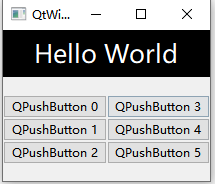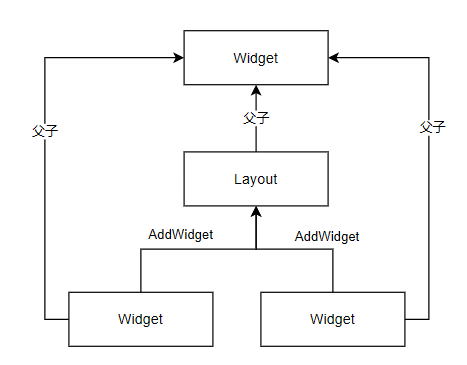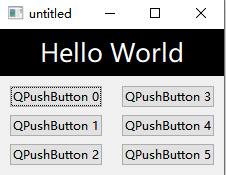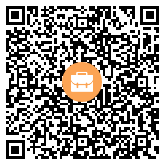QT中UI设计
2025-10-10
4
0
addWidget() 和 addLayout()
addWidget和addLayout都是布局的成员函数。
- addWidget():用于向布局中添加一个控件(Widget),例如按钮、标签、输入框等。
- addLayout():用于向布局中添加一个子布局(Layout),从而实现布局的嵌套和复杂界面设计。
| 特性 | addWidget(widget) | addLayout(layout) |
|---|---|---|
| 添加对象 | 控件 (Widget) | 布局 (Layout) |
| 对象类型 | QPushButton, QLabel, QLineEdit, QTextEdit 等 | QHBoxLayout, QVBoxLayout, QGridLayout 等 |
| 主要目的 | 将具体的UI控件放入布局中管理 | 实现布局嵌套,构建复杂的用户界面结构 |
| 层级关系 | 布局 管理 控件 | 父布局 管理 子布局 |
| 返回值 | 通常无直接返回值(或返回布局的索引) | 通常无直接返回值(或返回布局的索引) |
addLayout
addLayout用于实现layout嵌套。
void QtWidgetsApplication1::SetupUI()
{
//
this->resize(300, 200);
QWidget* centerwidget = new QWidget(this);
setCentralWidget(centerwidget);
QLabel* m_statusLabel = new QLabel("Hello World", centerwidget);
m_statusLabel->setAlignment(Qt::AlignCenter);
m_statusLabel->setStyleSheet("QLabel { color: white; font-size: 25px; padding: 8px; background: #000000; }");
QVBoxLayout* topLayout = new QVBoxLayout(centerwidget);
topLayout->setContentsMargins(0, 0, 0, 0);
topLayout->setSpacing(0);
topLayout->addWidget(m_statusLabel);
QHBoxLayout* mainLayout = new QHBoxLayout(this);
mainLayout->setContentsMargins(0, 0, 0, 0);
mainLayout->setSpacing(0);
topLayout->addStretch(1);
topLayout->addLayout(mainLayout);
topLayout->addStretch(1);
QVBoxLayout* leftLayout = new QVBoxLayout(this);
QVBoxLayout* rightLayout = new QVBoxLayout(this);
for (int i = 0; i < 6; i++)
{
QPushButton* pbtn = new QPushButton(QString("QPushButton %1").arg(i), this);
if (i < 3)
{
leftLayout->addWidget(pbtn);
}
else
{
rightLayout->addWidget(pbtn);
}
}
// 将左右两列添加到主布局
mainLayout->addLayout(leftLayout);
mainLayout->addLayout(rightLayout);
}

addWidget
addWidget用于对一个布局增加可显示的控件对象,如常见的QPushButton,QLable等,当然也可以是一个QWidget。
布局与可显示控件对象的关系是:布局创建的父对象是Widget,而布局对象中的子Widget也应是布局的父对象Widget.
void MicrophoneTestWindow::setupUI()
{
QWidget* centerwidget = new QWidget(this);
setCentralWidget(centerwidget);
QLabel* m_statusLabel = new QLabel("Hello World", centerwidget);
m_statusLabel->setAlignment(Qt::AlignCenter);
m_statusLabel->setStyleSheet("QLabel { color: white; font-size: 25px; padding: 8px; background: #000000; }");
QWidget* mainWidget = new QWidget(centerwidget);
QVBoxLayout* topLayout = new QVBoxLayout(centerwidget);
topLayout->setContentsMargins(0, 0, 0, 0);
topLayout->setSpacing(0);
topLayout->addWidget(m_statusLabel);
topLayout->addWidget(mainWidget);
QHBoxLayout* mainLayout = new QHBoxLayout(mainWidget);
mainLayout->setContentsMargins(0, 0, 0, 0);
mainLayout->setSpacing(0);
QWidget* leftColumn = new QWidget();
QWidget* rightColumn = new QWidget();
QVBoxLayout* leftLayout = new QVBoxLayout(leftColumn);
QVBoxLayout* rightLayout = new QVBoxLayout(rightColumn);
for(int i=0;i<6;i++)
{
QPushButton* pbtn = new QPushButton(QString("QPushButton %1").arg(i),this);
if (i < 3)
{
leftLayout->addWidget(pbtn);
}
else
{
rightLayout->addWidget(pbtn);
}
}
// 将左右两列添加到主布局
mainLayout->addWidget(leftColumn);
mainLayout->addWidget(rightColumn);
}

setContentsMargins和setSpacing
setContentsMargins和setSpacing是布局的成员函数。
- setContentsMargins 函数用于设置布局周围的边距。
- setSpacing函数用于设置布局管理器(如QHBoxLayout或QVBoxLayout)中控件之间的间距。
- addStretch函数是一个非常有用的布局管理工具,它允许开发者在布局中添加一个可伸缩的空间,这个空间可以根据需要进行伸缩,以达到理想的布局效果。addStretch用于将剩余空间进行分配。
 Qt教程
Qt教程





